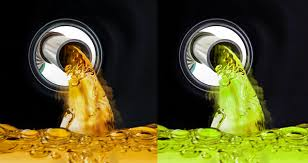As the world shifts toward cleaner energy solutions, bio-based fuels have become central to the conversation. Among the most talked-about alternatives to fossil diesel are renewable diesel and biodiesel. At first glance, these fuels seem similar — both are made from organic feedstocks, both promise lower emissions, and both are championed as sustainable diesel options.
But dig a little deeper, and you’ll find that renewable diesel and biodiesel are fundamentally different in how they’re made, how they perform, and how they interact with engines.
If you’re a fleet operator, industrial user, policymaker, or eco-conscious consumer, understanding these differences is essential. In this blog, we’ll clearly explain the key differences between renewable diesel and biodiesel — and introduce Narayani Green Eco Diesel, India’s innovative answer to sustainable transportation fuel.
What Is Renewable Diesel?
Renewable diesel, also known as Hydrotreated Vegetable Oil (HVO), is a clean-burning diesel alternative made from renewable feedstocks such as:
- Used cooking oil
- Animal fats
- Agricultural waste and residues
Unlike biodiesel, renewable diesel undergoes a hydrotreatment process, which removes oxygen and impurities to produce a pure hydrocarbon — chemically identical to petroleum diesel.
Key Advantages:
- Drop-in compatible: Can be used in any diesel engine without blending or modification.
- Cleaner emissions: Up to 80% reduction in lifecycle GHGs.
- Fully compatible with current storage and fuel infrastructure.
What Is Biodiesel?
Biodiesel (technical name: FAME – Fatty Acid Methyl Esters) is also derived from renewable sources like vegetable oils and animal fats. However, its production process — transesterification — is simpler. It creates a fuel that contains oxygen, which differs significantly from petroleum diesel in structure and performance.
Key Characteristics:
- Typically used as a blend (e.g., B5, B20) with regular diesel
- Cannot be used in all engines at high concentrations
- More prone to stability issues, especially in storage and cold weather
In-Depth Comparison
1. Engine Compatibility
Renewable Diesel:
Can be used as a 100% replacement for fossil diesel.
Works in vehicles, generators, farm machinery, and more.
Requires no engine upgrades or blending.
Biodiesel:
Mostly used in low-percentage blends like B5 or B20
Higher blends can cause:
- Injector clogging
- Seal degradation
- Performance issues in older engines
2. Cold Weather Performance
Renewable Diesel:
Excellent cold flow properties
Performs like fossil diesel in winter
No need for additives or heated systems
Biodiesel:
Prone to gelling in low temperatures
May require cold-weather additives
Can block fuel lines and filters in cold regions
3. Fuel Storage & Stability
Renewable Diesel:
High oxidative stability
Long shelf life without degradation
No sludge or microbial growth
Biodiesel:
Contains oxygen → oxidizes easily
Susceptible to bacterial growth and corrosion
Requires preservatives and regular monitoring during storage
4. Environmental Impact
Both fuels reduce emissions — but not equally.
Renewable Diesel:
Up to 80% lifecycle GHG reduction
Lower NOx, particulate matter, and carbon monoxide
Biodiesel:
Emission reduction depends on blend:
- B20: ~15–20% GHG reduction
- B100: ~60–70%, but not widely used
Why Narayani Green Eco Diesel Is a Game-Changer
India’s own Narayani Green is at the forefront of renewable fuel technology. Their NEXTGN Renewable Diesel is made using advanced hydrotreatment — converting waste oils and agricultural byproducts into drop-in fuel that works across all diesel engines.
Features of NEXGN Diesel:
- Meets ASTM D975 and international fuel standards
- 100% engine compatible and infrastructure-ready
- Supports Make in India and circular economy goals
- Produced in India, reducing reliance on imported fossil fuel
Final Thoughts
While both biodiesel and renewable diesel offer pathways toward sustainability, only renewable diesel offers:
- Drop-in compatibility
- High engine efficiency
- Cold-weather reliability
- Superior emissions reduction
Thanks to Narayani Green’s NEXTGN technology, India now has a homegrown, scalable, and future-ready clean diesel alternative.
Ready to switch to the future of clean fuel?
Discover how Narayani Green Eco Diesel can reduce your emissions and power your engines — with zero modifications.
[Contact Narayani Green for Industrial Supply]
[Read: What Is Renewable Diesel and Why It Matters →] (Internal link)
[Learn more about ASTM D975 standards →] ASMT D975

